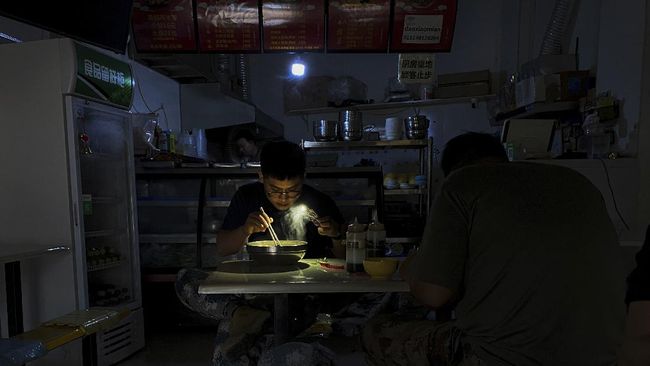Jakarta, CNBC Indonesia – The electricity crisis in China is getting worse. Heavy rains have closed 60 coal mines in Shanxi Province, China’s biggest coal mining hub. This news was released through a statement by the Provincial Government’s Emergency Management Bureau, Saturday (9/10/2021).
The province, which is home to a quarter of China’s coal production, also reported heavy rains and landslides that hurt operations at local mines, according to the state-owned national finance newspaper, Securities Times.
As a result of this event, the price of thermal coal futures, which are mainly used to generate electricity, soared to all-time highs on the Zhengzhou Commodity Exchange, Monday (11/10/2021).
Prices rose as much as 12 percent to 1,408 yuan (US$219) per metric ton. This price increase has more than doubled throughout 2021.
Coal is the main energy source in China and is widely used for heating, power generation, and steelmaking. Last year, coal made up nearly 60% of China’s total energy use.
The energy shortage has spread to China’s 20 provinces in recent weeks. This forced the government to ration electricity during peak hours and some factories to suspend production. As a result, industrial output lost and weighed on China’s economic outlook.
“China’s power outages will add to economic pressure, weighing on GDP growth for 2022,” Moody’s analysts said in Monday’s report CNN International.
They added that “the risks to GDP forecasts could be greater as disruptions to production and supply chains come in.”
The problem led China’s central government to allow coal-fired power plants to raise the price they charge for electricity by as much as 20% Friday.
“Since the beginning of this year, energy prices on the international market have risen sharply, and domestic electricity and coal supplies have remained tight,” said the State Council, the country’s cabinet. “Those factors have caused power outages in some places, affecting the normal operation of the economy and the lives of residents.”
Power plants in China were reluctant to increase production because of the high price of coal. Due to Beijing controlling electricity costs, manufacturers cannot simply increase their prices without permission from the government.
The government took other steps to defuse the crisis. Authorities in Inner Mongolia, China’s second-largest coal-producing province, asked 72 mines to increase production by 98.4 million metric tons, equivalent to about 30% of China’s monthly coal output as of Friday.
Previously, China’s factory activity shrank due to restrictions on electricity use. A survey released Thursday (30/9/2021), as quoted by the Guardian, showed China’s factory activity contracted in September. This is the first time this has happened to China since the pandemic hit in February 2020.
The figures show that output is falling due to a slowdown in production in high energy consuming industries. One of them is like a factory that processes metals and oil products.
China’s electricity crisis comes as the country’s energy demand surges past pre-pandemic levels. However, restrictions on coal imports from Australia due to political disputes have put pressure on the supply of this commodity.
(Hi Hi)
– .


